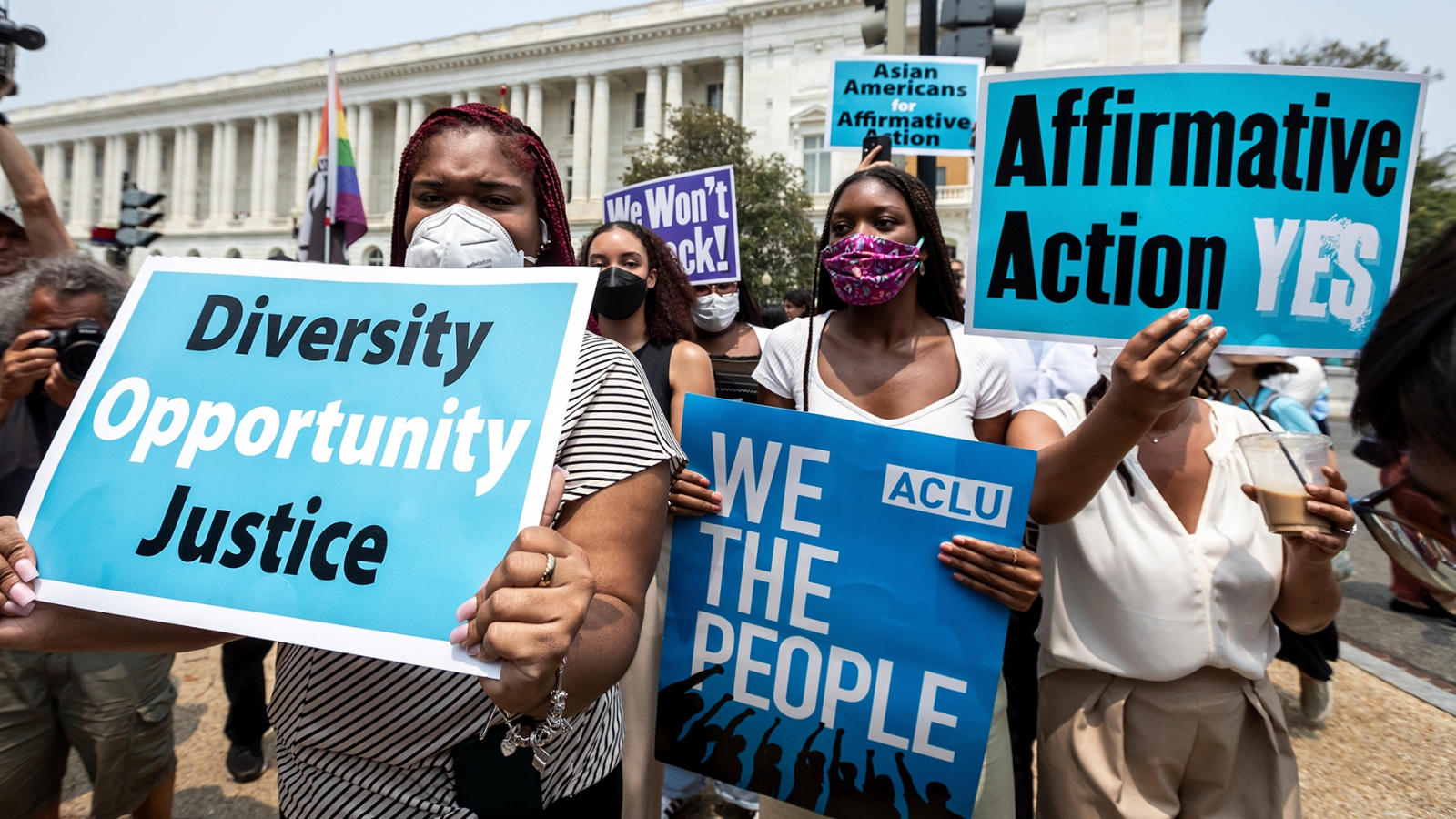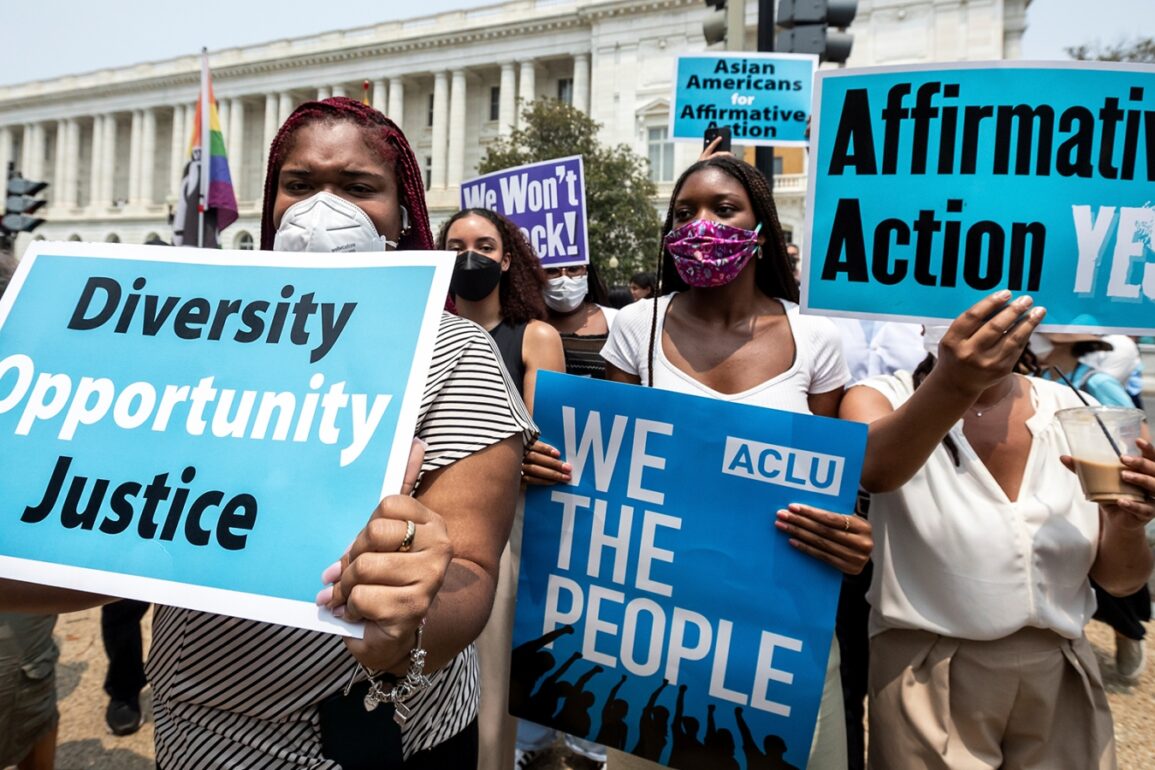
The morning after I graduated high school, I awoke to read the Supreme Court’s Dobbs decision, an attack on the right to control of one’s own body that led to a year of exhaustive anti-choice legislation. On Thursday, the summer after my first year at Harvard University, I awoke to read the Supreme Court’s decision on affirmative action. The day after, I awoke to the court’s gutting of student loan relief.
The Supreme Court is an engine of regression, specifically targeted at taking away liberty and opportunity. And nowhere is that being felt more heavily than among Black women, who are watching our ability to exist in society erode.
The decision to repeal Affirmative Action programs in higher education is an attempt to delegitimize the admission of Black students into elite universities. It suggests that spots are “taken” — and not earned — by students, even as history tells us that when any Black student makes it into an elite school, it is in direct defiance of the years of oppression and exclusion of Black Americans from educational spaces. The Ivy League admission system has admitted Black students for just under 55 years. To suggest that our presence at universities came through ease and access is a slight against centuries of designed exclusion.
College admission has become a higher stakes game every year as Harvard boasts its second-lowest acceptance percentage in history this cycle. And it has become an avenue for scapegoating Black people as “taking spots.” Still, data shows us that legacy admission has the most considerable impact on unfair acceptances. A 2019 study found that 43 percent of white students admitted to Harvard University were recruited athletes, legacy students, children of faculty and staff, or on the dean’s interest list — applicants whose parents or relatives have donated to Harvard. So while this issue has been described as an issue of two minorities, the struggle for acceptance is due to a need to restructure the admissions process toward fairness entirely. And with true fairness comes the dismantling of white supremacy.
Students for Fair Admission (SFFA) claims that these programs limit the fairness of admissions for Asian Americans, an attempt to leverage the stereotypes against Asian Americans as model minorities and African-Americans as victims to further racial tension and bring misguided debates back into political discourse. In their statement on Instagram, The Harvard Radcliffe Asian American Association said, “the end of Affirmative Action is not a win for Asian Americans. In fact it actively harms the most vulnerable members of our community. Low income and multicultural Asian Americans…are already underrepresented. This divide will only continue to grow in the absence of race-conscious admissions.”
It only took a day, after gutting affirmative action, for the court to continue its attack on Black women. The student debt decision will impact all Americans, but racial and gender wealth gaps created by our histories will only extend, as Black women — according to Goldman Sachs — have 90 percent less wealth than American white men.
When we do not recognize historical wrongdoings against marginalized people, we subject Black women’s violence to micro and macro ways. Structural racism has already limited the everyday economic freedom of Black women, and by now gutting holistic admissions and further making elite education unaffordable, the court has left Black mothers and caregivers with an even more daunting pathway to get their children into the halls of higher education. Choices are limited for our education and our freedoms.
And choices are limited for our bodies.
The social determinants of health, such as economic stability, social context, education, and healthcare access, reveal the lingering impact of Black women’s abuse in healthcare systems. We are three times more likely to die in pregnancy and abortion. And, because of high chronic stress and race-based trauma and fear, most Black women produce about 15 percent more cortisol than white women, which raises the risk of pregnancy complications, according to the National Heart, Lung, and Blood Institute.
By failing to protect abortion rights, the courts opened the floodgates for unsafe, unregulated abortion — rather than reform needed to heal the wounds of centuries of reproductive injustice.
It’s a painful reversal from a court that has the power to protect liberty and opportunity. Where my childhood meant watching Supreme Court make history legalizing same-sex marriage, its shifts in makeup have corresponded to a series of decisions that have pushed Black women to the margins of society.
The Supreme Court’s decisions come in the context of historic firsts, both for the court and for Harvard. When Justice Kentanji Brown Jackson and President Claudine Gay made history as the first Black women to be appointed to the Supreme Court and Harvard, respectively, Black women gained a needed seat at the table. But the decisions have shown that we need more than seats at the table — we need systems that recognize, rather than ignore, structural racism, and actively work to address them.
Black women have never, throughout history, been able to enjoy the fairness and freedom weaponized against us in the courts. The constant stripping of access, rights, and opportunity limits our ability to mobilize as a community. Thanks to the court, low-income, queer, and disabled Black women who experience these decisions tenfold are being legally removed from spaces from which they were already socially gatekept.
This decision and case exist only because of the centuries of oppression against people of color, which made way for the founding of old, white colleges and universities. Racialized people seek to climb these ladders to make it into spaces often clouded with nepotism. Instead, they are met with a political landscape that tries to blindfold Americans from their histories.
Black women face a judicial system that ignores their lived experience, but we will continue to work toward building a world that celebrates these stories, recognizes historical wrongdoings, and brings an intersectional lens to the Supreme Court’s decisions and their impact.
While the 4th should mark Independence Day, this year it’s marred by a Supreme Court that has pushed Black women out of the conversation on freedom. Education is freedom. To be in community with those who look like you is freedom. To be economically empowered is freedom. To choose when and where to create life is freedom.
Black women and girls stand on the shoulders of those who pushed, generation by generation, for those freedoms, and we cannot be silent in any person’s attempt to take them away. We cannot celebrate a nation where freedom is seen as a scarcity instead of a norm.



